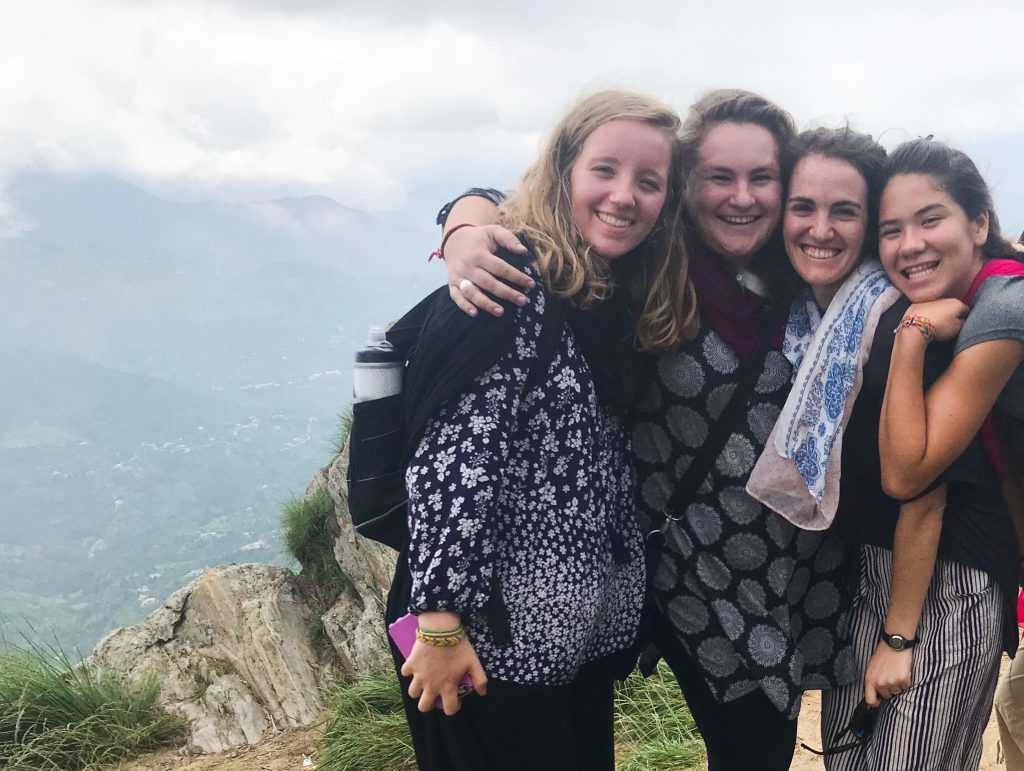As much as I love to say that I have an open mind, I came into the homestay portion of this program with very set expectations. I thought every moment between my host family and I would be awkward. I figured I would get tired of the food after the first few days. I expected the language barrier to limit all communication and interactions to just short phrases and weird motions for what we need. Besides the fact that my host grandma thinks I’m too thin (one of the only things I’ve understood from her rapid fire Hindi and motions of eating more food) and I haven’t yet figured out how to explain that I do indeed eat a lot of food here, effective communication (for the most part) looks entirely different than I had previously imagined. My roommate (Mimi) and I taught our host cousin how to make friendship bracelets. Prior to this experience, I assumed crafts like this would be impossible. If I can’t verbally explain how to tie the knot in this specific direction and when to switch strings to get different colors, how could I ever teach someone how to make a friendship bracelet? As it turns out, words are unnecessary. Convenient, but unnecessary. Mostly from observation, she mastered the art of making friendship bracelets in less than an hour (something that took me years of practice at Girl Scout camps to do). And this isn’t to say I thought she wasn’t capable of making friendship bracelets, but I didn’t realize that you can teach (and learn) without words. At home, I would claim that I had effective communication skills on resumes and applications, but I was only associating this skill with verbal explanations; I ignored the other realm of communication that exists. I’ve noticed here that almost every movement and action communicates a specific message. A smile is an invitation for conversation; eye contact says it’s okay to approach me; showing the soles of your feet is a sign of disrespect towards teachers. Here, the way you present yourself is speaking in its own way. Living with a family in Satoli and having guest speakers/lecturers throughout my time in India has forced me to be conscious of what I might be communicating, even if I never say a word.
I’ve grown to have a more accepting mindset in the very common uncomfortable situations where I have to communicate my need for things like hot water for a shower with a combination of repeating « hot bath » and pretending like I’m scrubbing my arm with soap. I love learning random Hindi phrases like the word for frog because one got trapped in our room and I freaked out. Each day I learn multiple new words and recognize new cultural norms, but I’m 100% positive there are a million messages that I don’t understand or even realize. I’m struggling to define the norms I recognize and accept the fact that I can’t learn everything about this culture in just a few weeks. I know I won’t be able to communicate my experiences and thoughts about all of this immediately upon my return, but observing and experiencing the world around me is the first step to learning about it, and eventually sharing it. Just from writing this blog post, I’ve pushed myself to realize that sharing what I’ve learned doesn’t have to be verbally, it can be through pictures, cooking, making chai, dancing, sharing videos, etc.. This entire process of learning and applying new communication skills doesn’t end after I’m thrown in a foreign environment. Everything is a step by step process. Now that I can address how communication is different in India, I need to recognize the same for the U.S. (I’ve truly realized that everything is easier said than done). These times can be frustrating, but each day has made me rethink my definition of « a good time ». I don’t have to always smile and laugh to have fun. Now, fun for me is learning, growing, being confused, asking questions, sitting back and observing, and when appropriate, laughing.
These new ideas of communication are just a small fraction of what India has taught me so far. It would take weeks, maybe even months or years for me to answer the « how was India? » question. This is just a small, small response in light of a much bigger picture. For now, I’ll continue to grow, learn, observe, have fun, and attempt to explain my thoughts and feelings towards India.
Leah W



